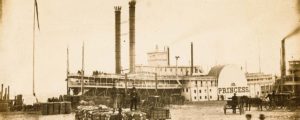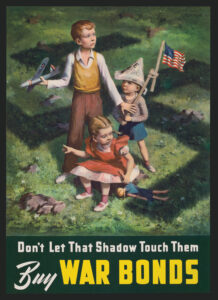The Children’s Civil War, by James Marten, University of North Carolina Press, P.O. Box 2288, Chapel Hill, NC 27515, 365 pages, $34.95.
In June 1998, I reviewed Reluctant Witnesses: Children’s Voices from the Civil War for Civil War Times. Is there really room for another book on the same subject? The answer is a resounding “yes.”
James Marten, an associate professor of history at Marquette University, takes as his basic theme the influence children’s experiences of the Civil War had on their ideals and behavior as they became the politicians, writers, and voters in the years 1870 through 1918. Based on an assortment of letters, diaries, and Civil War publications, he shows that for many men and women, their political views had crystallized by age 10. This early hardening of opinion was reinforced by a rapidly accumulating aura of myth and nostalgia, given impetus by such organizations as the United Daughters of the Confederacy and the Grand Army of the Republic, and aided by politicians North and South.
Marten draws on a large pool of specifics to document his views. Textbook publishers in both regions sought to inculcate correct political beliefs. The Union ABC began with, “A is for America, land of the free,” and ended with, “Z is for Zouave, who charged on the foe.” Confederate publishers offered a much wider selection of patriotic textbook material. An Elementary Arithmetic asked its readers, “If one Confederate soldier can whip seven Yankees, how many soldiers can whip 49 Yankees?”
Tradition has it that children at home during the war cheerfully helped their mothers around the house. The extent of such shouldering of burdens may be part of a nostalgic mist, however, as Marten cites many examples of sullen daughters, surly sons, and gangs of juvenile thugs. Certainly, the absence of the stabilizing effect of fathers and older brothers was a factor in these disruptions.
Wartime letters from fathers to their sons shed further light on the juvenile disruptions. Of course, there were the usual admonitions to be brave, helpful, and grown up, but some of the requests took a more ominous tone. One father told his children that if they were well behaved, God would keep bullets away from him. Imagine how they felt when he was, in fact, killed.
One social class suffered a particular wrench during the war: the well-to-do slave-owning families. As their “property” ran away or became rebellious, the white children faced a new reality. One Southern lady admonished her grandsons, “There will not be much to live on if this war lasts long, and you may all have to work for a living.”
Black children suffered a different set of privations. When parents ran away, the children they left behind were likely to be punished. Before emancipation, children were valuable, both as property that could be sold and as workers to be sent to the fields at about age six. But after emancipation, there was no incentive for their former masters to feed or house them, and most Union camps set up to accommodate them were atrocious. The records show that such children were as likely to be abused by Union soldiers as by Confederates.
The war’s end brought a new set of problems to the children of the 1860s. Unlike the sentimental lithographs picturing the family happily reunited, the combat veteran was a stranger to his younger children. He often made the situation worse by taking a military stance, complete with short temper and harsh discipline, in resuming his role as head of the family.
The factors touched on above are only a sampling of what Marten has assembled to explain how certain attitudes and beliefs, still very alive today, originated in the childhoods of the 1860s. There is no denying the excellence and importance of his book.
Thomas P. Lowry
Woodbridge, Virginia




